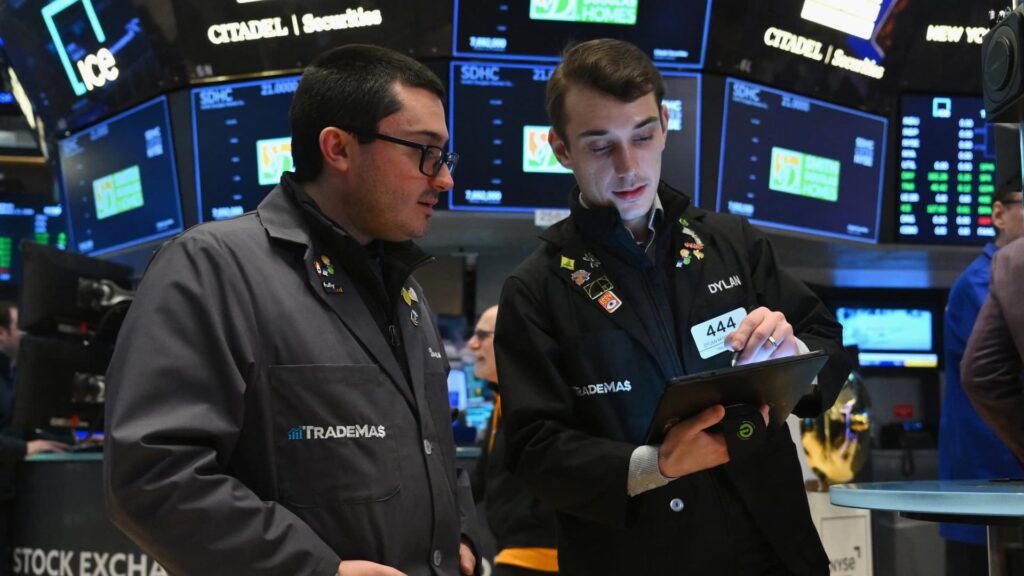Traders work on the floor of the New York Stock Exchange during morning trading on Jan. 11, 2024.
Angela Weiss | AFP | Getty Images
The S&P 500 and Dow Jones Industrial Average powered to new highs on Friday as banking behemoths ushered in a promising start to the third-quarter earnings season.
The broad index rose 0.6%, while the Dow gained 400 points, or 0.9%. The Nasdaq Composite added 0.3%, even as Tesla shares tanked 7% on the back of an underwhelming robotaxi event. The tech-heavy index is less than 2% below its all-time high.
“What we’re seeing — and I think you’re seeing it hit pretty hard today, in a good way — is a broadening of the market,” said Craig Sterling, head of U.S. equity research at Amundi US.
The major averages are headed for weekly gains, with the S&P 500 up 1.1% and on pace for a fifth straight positive week. The Dow is toting a 1.2% gain, along with the Nasdaq.
A strong start to the third-quarter earnings season provided a lift to stocks. JPMorgan Chase rose 5% after topping profit and revenue expectations, while Wells Fargo popped nearly 6% on stronger-than-expected profits. Investors overlooked disappointing revenue and an 11% decline in net interest income.
“Net interest income used to be the bellwether of whether [a] bank is doing well or not,” said Kim Forrest, chief investment officer at Bokeh Capital Partners. “Investors have comprehended that they’ll make money in good times and bad.”
Wall Street tends to view the banking sector as a barometer for the health of economy, setting the tone for the remainder of the earnings season. However, Forrest notes they lack the visibility into forward guidance that often impacts the post-earnings stock moves.
Stocks also benefitted from a raft of inflation data that helped alleviate fears that inflation wasn’t cooling off quick enough, and signaled that the central bank is approaching its 2% target. Goldman Sachs economists suggest that the central bank may accomplish that fear with the September personal consumption index later this month.
Friday’s producer price index, a measure of wholesale inflation, remained unchanged in September and came in below the 0.1% increase expected by Dow Jones. That helped temper some fears sparked by September’s consumer price index, which increased slightly more than expected.
“Overall, these numbers are getting less impactful as inflation moderates,” said David Russell, global head of market strategy at TradeStation. “The Fed could still be on track for 25 basis points at the next two meetings.”
Fed funds futures trading suggests a roughly 86% likelihood that the Federal Reserve will dial back interest rates by a quarter point in November, according to the CME FedWatch Tool. Central bank policymakers will keep a close eye on additional data, which will shape their course on rates.

